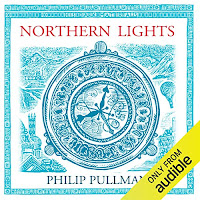Subtitled "The Octopus and the evolution of intelligent life," this is an absorbing mix of marine biology and philosophy, delving into the worldview of the octopus and our sense of what intelligence even is.
This all helps place the octopus in context but the most arresting bits of the book are when Godfrey-Smith is in the water with them, reporting directly, and in his logical analysis of how different their biology and therefore their worldview is to ours.
We then return to the octopus:
"Cephalopods are an island of mental complexity in the sea of invertebrate animals. Because our most recent common ancestor was so simple and lies so far back, cephalopods are an independent experiment in the evolution of large brains and complex behavior. If we can make contact with cephalopods as sentient beings, it is not because of a shared history, not because of kinship, but because evolution built minds twice over. This is probably the closet we will come to meeting an intelligent alien." (p. 9)I've waded through some of this stuff before - see my published work on the octopus. Godfrey-Smith also uses studies of other species to shed light on octopus intelligence and our assumptions. He discusses the findings of Baboon Metaphysics, which made me wonder how applicable quotations from Jane Austen would be to the octopus.
This all helps place the octopus in context but the most arresting bits of the book are when Godfrey-Smith is in the water with them, reporting directly, and in his logical analysis of how different their biology and therefore their worldview is to ours.
"Some features show a mixture of similarity and difference, convergence and divergence. We have hearts, and so do octopuses. But an octopus has three hearts, not one. Their hearts pump blood that is blue-green, using copper as the oxygen-carrying molecule instead of the iron which makes our blood red. Then, of course, there is the nervous system - large like ours, but built on a different design, with a different set of relationships between body and brain." (p. 74)That nervous system extends into the limbs, effectively meaning that octopuses "see" with their arms to a limited extent, as well as with their eyes. Godfrey-Smith discusses (on p. 80) tactile vision substitution systems (TVSS), where a video camera attached to a blind person converts optical images into vibration or electrical stimulation the person can feel. When a dog walks past, the blind person doesn't feel a vibration so much as sense an object in motion, relative to themselves. Key to this is that the TVSS works in real time, so the person's own position and movement is part of the sensation: you move, and sense how that affects the relative position of objects around you.
We then return to the octopus:
"What could it be like to see with your skin? There could be no focusing of an image. Only general changes and washes of light could be detected. We don't yet know whether the skin's sensing is communicated to the brain, or whether then information remains local. Both possibilities stretch the imagination. If the skin's sensing is carried to the brain, then the animal's visual sensitivity would extend in all directions, beyond where the eyes can reach. If the skin's sensing does not reach the brain, then each arm might see for itself, and keep what it sees to itself." (p. 121)Some of the science is a little hard-going, and (as always) I would prefer footnotes to endnotes, and numbers in the body text to indicate when to check a note. But it's an appealingly short book - 204 pages before the endnotes - stuffed with utterly boggling ideas. It's also an emotional story: the tentative contact with these creatures, the dangers all around them, their shockingly short lives. And then, just when we think we grasp how strange these things are, he undercuts some of what he's said and makes the point that they're not so very distant.
"The mind evolved in the sea. Water made it possible ... When animals did crawl onto dry land, they took the sea with them. All there basic activities of life occur in water-filled cells bounded by membranes, tiny containers whose insides are remnants of the sea. I said in chapter I that meeting an octopus is, in many ways, the closest we're likely to get to meeting an intelligent alien. Yet it's not really an alien; the Earth and its oceans made us both." (p. 200)












































